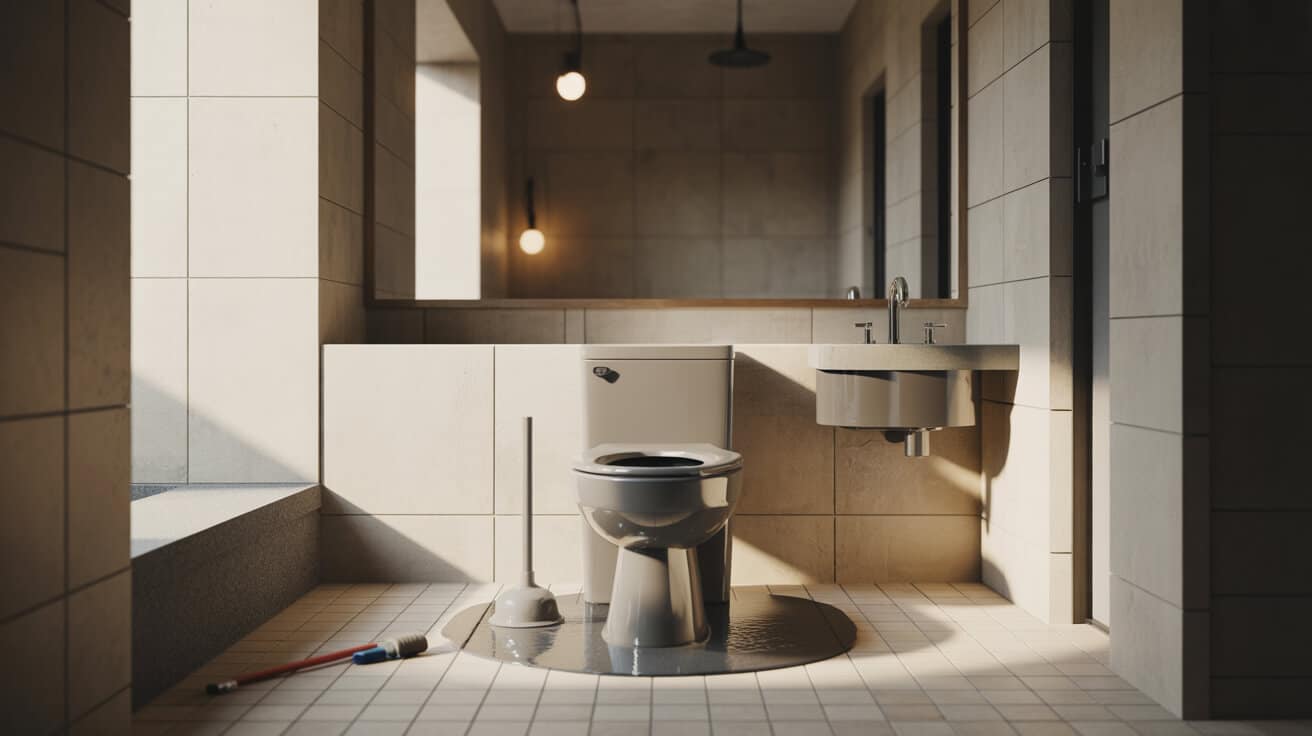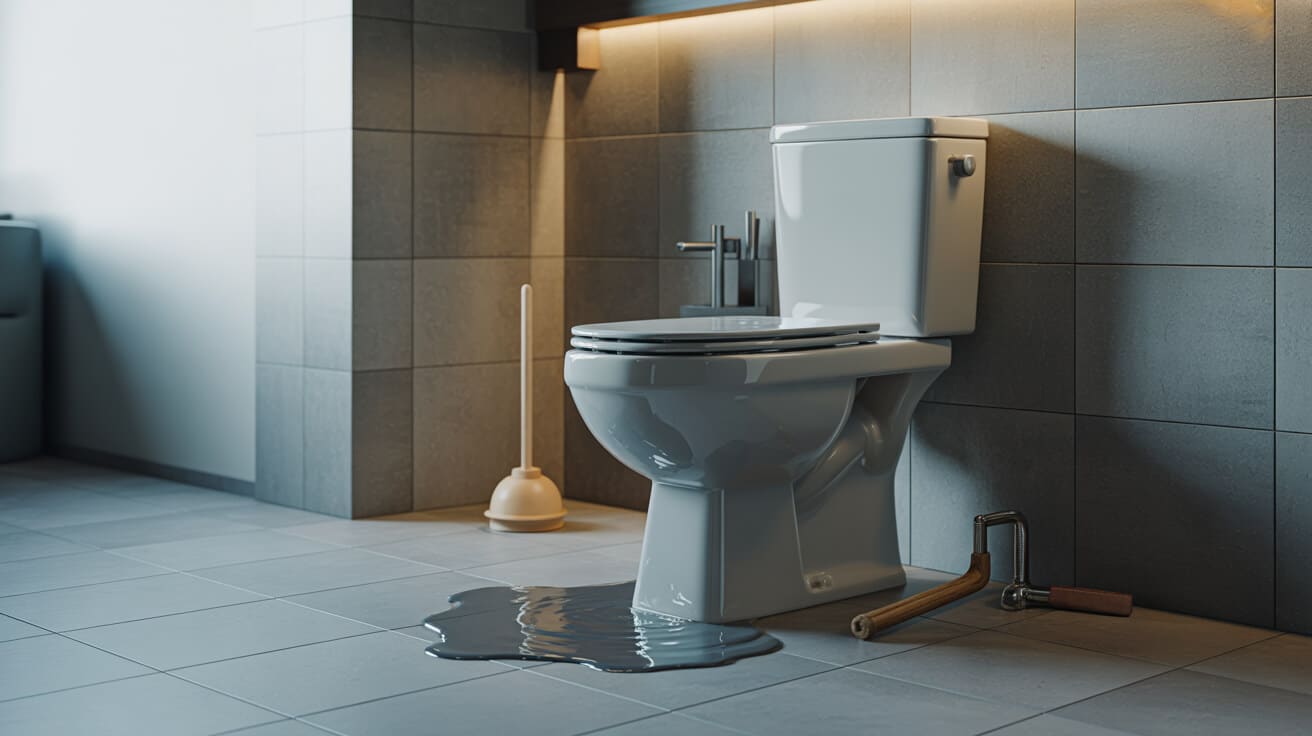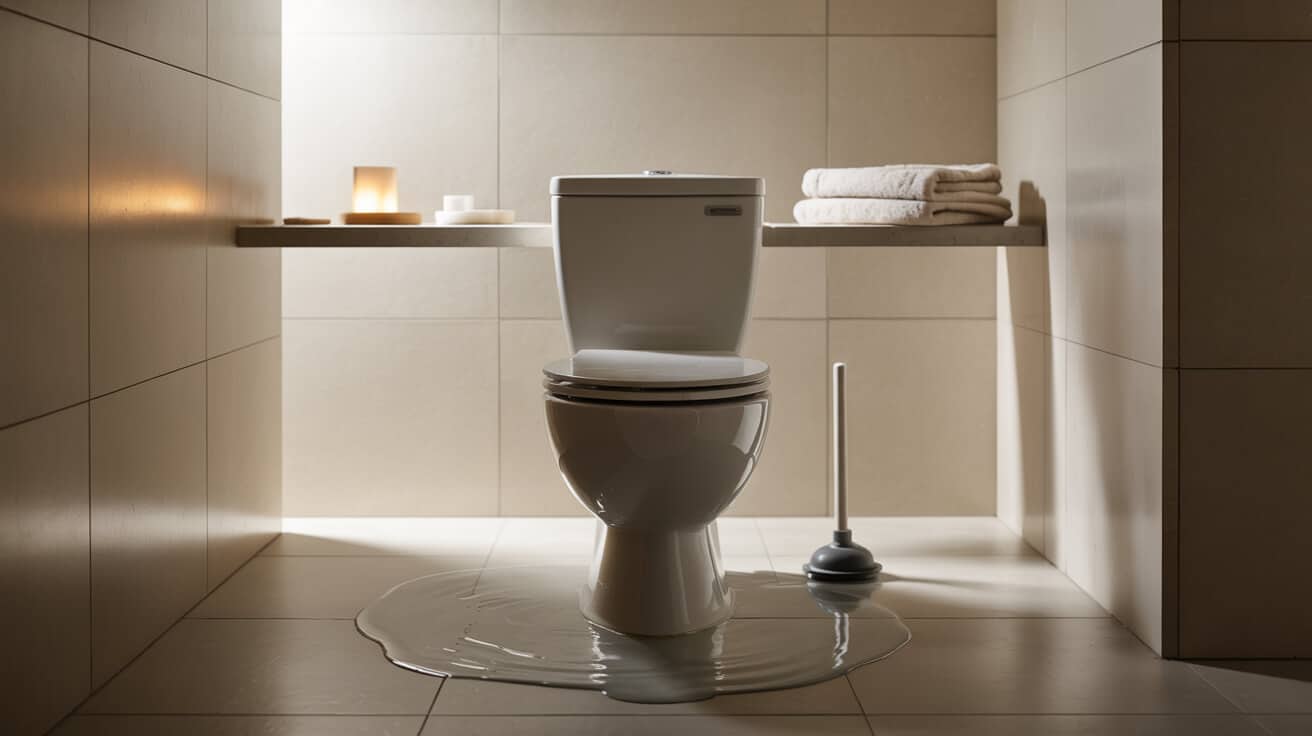Blocked toilet clearance is essential for preserving sanitary conditions and ensuring uninterrupted functioning of plumbing and heating systems in both residential and commercial environments. When a toilet becomes obstructed, immediate resolution is necessary to prevent potential water damage, reduce health hazards, and minimise prolonged service disruptions. This article provides a comprehensive examination of blocked toilet clearance, detailing its causes, methods of diagnosis and treatment, associated tools, and the regulatory context that governs these procedures, while addressing the diverse needs of property owners, facility managers, and service contractors.
Overview / Context
Blocked toilet clearance serves as a critical maintenance activity within the broader plumbing and heating sector, designed to restore proper drainage and prevent the undesirable effects of system obstructions. It is an integral component not only of emergency repair protocols but also of regular preventative maintenance. Blockages can range from minor nuisances to severe system failures, and their causes vary widely—from everyday accumulation of waste materials to systemic issues related to ageing infrastructure.
In the context of a Plumbing & Heating Company, such as Plumbers 4U, the clearance process is executed with a focus on technical precision, safety, and adherence to stringent regulatory standards. Understanding the context behind these blockages—including factors like household usage patterns, the composition of waste materials, and the structural integrity of the drainage system—is fundamental to developing effective, long-term solutions. As property demands evolve, so too do the methods and preventive measures employed, ensuring that blocked toilet clearance remains a dynamic, responsive aspect of the service portfolio.
History
The evolution of blocked toilet clearance mirrors the broader historical development of plumbing and sanitation technologies.
Origins
In early plumbing systems, blockages were primarily managed through simple gravity-fed drainage and rudimentary manual interventions. Early builders relied on basic tools, such as simple plungers and homemade rods, to address obstructions that arose from the accumulation of organic matter and discarded materials.
Industrial Emergence
With the advent of industrialization, plumbing systems became more complex owing to the introduction of more durable materials like cast iron and later copper. This period witnessed the development of more systematic approaches to blockage management, including the early use of mechanical augers and chemical agents designed to break down organic residues. The need for standardised methods became increasingly evident as urban populations expanded and occupancy levels increased, necessitating more reliable maintenance practices.
Contemporary Evolution
Modern blocked toilet clearance has significantly benefited from advances in both diagnostic and remedial technologies. Today, highly specialised equipment such as motorised drain augers, hydro-jetting machines, and high-resolution drainage cameras are routinely used. These technologies not only improve the efficiency of blockage resolution but also enhance diagnostic accuracy, which is critical for tailoring interventions to the specific nature of the obstruction. Additionally, modern practices are governed by a host of regulatory standards designed to ensure safety and environmental protection, marking a clear departure from the less codified methods of the past.
Concept / Description
Blocked toilet clearance refers to the systematic removal of obstructions from a toilet’s drainage system, restoring unimpeded water flow and proper waste evacuation. The process involves a series of steps including the identification of the blockage, selection of an appropriate clearance method, and verification of restored functionality.
Structural Components
A typical toilet drainage system comprises several interconnected components:
- Cistern and Flush Mechanism: Stores water for flushing.
- Trap (U-Bend): Retains a small volume of water to prevent sewer gases from entering the living space.
- Drainage Pipe: Connects the toilet to the main waste disposal system.
- Vent Stack: Helps regulate air pressure within the drainage system.
The blockage can occur in any of these segments, but it is most commonly observed in the trap or the connecting pipes.
Mechanism of Blockage Formation
Blockages develop through the accumulation of waste materials that exceed the capacity of the toilet’s drainage system. Several factors contribute to their formation:
- Foreign Objects: Items that are non-flushable can become lodged within the pipes.
- FOG Build-Up: The deposition of fats, oils, and grease over time forms a sticky residue that narrows the pipe’s diameter.
- Excessive Toilet Paper: Overuse or improper disposal can lead to agglomeration and eventual clog formation.
- Structural Deterioration: Age-related corrosion or physical damage to the pipes can precipitate blockages by reducing the effective passage area.
Each of these factors interacts in a complex manner, leading to varying degrees of obstruction that require specific diagnostic and remedial approaches.

Functionality / Purpose / Applications
The primary function of blocked toilet clearance is to restore the normal function of a toilet’s drainage system, thereby ensuring effective sanitation and minimising risks associated with stagnant waste.
Practical Applications
Blockage clearance is applicable across a wide range of settings:
- Residential Installations: Homeowners often require clearance services to resolve partial or complete blockages that disrupt daily routines and impact living conditions.
- Commercial Properties: Facilities management teams in office buildings, shopping centres, and restaurants rely on rapid clearance methods to maintain hygiene and prevent operational disruptions.
- Institutional Buildings: Schools, hospitals, and government facilities require high efficiency and compliance with strict health standards to manage blocked drains effectively.
Outcomes and Benefits
Efficient blocked toilet clearance yields multiple benefits:
- Restoration of Flow: Ensures that water and waste are effectively removed from the toilet system, preventing overflow.
- System Integrity: Reduces the probability of pipe damage and contributes to the overall longevity of the plumbing system.
- Health and Sanitation: Minimises the risk of unsanitary conditions that could lead to microbial growth or pest infestation.
- Economic Savings: Prevents extensive damage and the need for more invasive repairs, thereby saving on long-term maintenance costs.
By addressing blockages promptly, service providers help maintain consistent system performance and ensure compliance with regulatory requirements.
Classifications / Types / Variants
Blocked toilet systems can be classified based on the nature, extent, and location of the obstruction. This classification aids in selecting the appropriate diagnostic and clearance methods.
Based on Obstruction Severity
- Partial Blockages: In these cases, some water can pass through, though the flow is noticeably reduced. They are often characterised by intermittency, with blockages recurring frequently.
- Complete Blockages: These occur when the drainage pathway is entirely obstructed, resulting in a complete shutdown of water flow and immediate need for intervention.
Based on Cause
- Foreign Object Blockages: Result from the unintentional introduction of items that are not designed to be flushed, such as sanitary products or small toys.
- Organic Residue and FOG Blockages: Arise from the gradual build-up of fats, oils, grease, and excessive toilet paper, which combine to form a cohesive obstruction.
- Structural Blockages: Occur due to deterioration or collapse of pipe segments, which can both cause and exacerbate blockages.
Based on Location
- Cistern Blockages: These involve the water storage component of the toilet system, where debris interferes with the flush mechanism.
- Trap or U-Bend Blockages: The curved section of the drain frequently accumulates waste, making it a common site for obstructions.
- Main Drain Blockages: Occur in the primary conduit that leads to the public sewer system, often indicating broader system issues.
Systems / Tools / Methodologies
Blocked toilet clearance is executed through a combination of diagnostic procedures and corrective interventions. These methods are selected based on the obstruction’s severity and cause.
Diagnostic Techniques
- Visual Inspection: Initial assessment involving a direct examination of the cistern, trap, and visible portions of the drain. In many cases, an external blockage can be identified without invasive intervention.
- Manual Testing with Plungers and Drain Rods: These tools are used as first-line measures to dislodge blockages, particularly in cases of partial obstruction.
- Acoustic and Ultrasonic Tracing: Utilises sound waves to detect and locate the precise point of blockage in inaccessible pipe sections.
- Endoscopic Camera Inspection: Deploying small, flexible cameras into the drainage system for real-time visualisation of the obstruction, enabling precise targeting of removal methods.
- Thermal Imaging: Detects temperature discrepancies indicative of blockage locations, offering a non-invasive diagnostic option.
Clearance Procedures
- Manual Clearance Techniques: Employ basic plungers and drain rods to physically disrupt the blockage. This method is often effective for minor blockages and initial remediation.
- Mechanical Augering: Involves the use of motorised drain augers that can penetrate deeper into the pipework to break up and remove obstructions mechanically.
- Hydro-Jetting: A technique that employs high-pressure water jets to clear blockages and flush debris from the system. This method is particularly useful in handling stubborn, dense blockages without causing damage to the pipes.
- Chemical Treatments: In select cases, specialised chemical drain cleaners are applied to dissolve organic residues. Their use is regulated to ensure no adverse environmental impact.
Tools and Equipment
Several tools are essential for effective blocked toilet clearance:
- Plungers: Basic manual tools designed to create pressure differentials and dislodge obstructive material.
- Manual and Motorised Drain Augers: Tools that physically disrupt and remove blockages, available in various configurations depending on the pipe diameter and blockage nature.
- Hydro-Jetting Machines: Equipment that uses pressurised water to remove blockages, often deployed when mechanical methods are insufficient.
- Drain Cameras/Endoscopes: Provide real-time imaging of the inside of the sewer system, aiding in precise diagnosis and targeted intervention.
- Chemical Agents: Formulated to dissolve blockages, especially effective against FOG build-up; always used in accordance with environmental guidelines.
Stakeholders / Entities Involved
Blocked toilet clearance involves collaboration among multiple stakeholder groups:
Homeowners and Residential Tenants
These individuals are primarily affected by sanitation issues arising from blocked toilets. Their immediate concerns include the rapid resolution of blockages, prevention of property damage, and clear communication regarding the interventions required.
Landlords and Property Managers
Responsible for ensuring the proper functioning of all plumbing systems within their properties, landlords and property managers require reliable service to meet regulatory standards (such as CP12 compliance) and to maintain tenant satisfaction. They monitor service performance and expect thorough documentation and follow-up post-intervention.
Commercial Facility Managers
In environments where high occupancy and frequent usage are prevalent, prompt resolution of blockages is essential. Commercial facilities require services that minimise disruption and ensure that operations continue seamlessly while maintaining sanitation standards.
Plumbing Service Providers
Companies like Plumbers 4U provide comprehensive diagnostic and clearance services. Their role encompasses technical expertise, adherence to regulatory standards, effective communication of service details, and meticulous record keeping for compliance purposes.
Regulatory Authorities
Local and national regulatory bodies—through frameworks such as WRAS, Building Regulations, and health and safety guidelines—establish the standards that all clearance services must meet. Their oversight ensures that repairs are conducted safely, efficiently, and in an environmentally responsible manner.

Legal / Regulatory / Ethical Considerations
Plumbing and drainage services, including blocked toilet clearance, operate within a structured regulatory environment designed to safeguard health and safety.
Regulatory Frameworks
- Building Regulations (e.g., Part G and Part H): Outline the requirements for sanitary installations and proper drainage systems in both new builds and renovations.
- WRAS Guidelines: Govern the selection of materials and installation practices to ensure water safety and prevent contamination.
- CP12 Certification: Provides assurance that the plumbing work, especially involving gas and water systems, complies with statutory safety requirements.
- Local Plumbing Codes: Vary by jurisdiction but commonly include standards for waste disposal, backflow prevention, and system integrity.
Ethical Considerations
Ethical clearance practices encompass transparency in diagnosis and pricing, responsible use of chemicals, and rigorous documentation to establish compliance with regulatory standards. Service providers are expected to communicate clearly with clients, ensuring that customers are fully informed about the nature of the blockage, the proposed methods of clearance, and any associated risks or regulatory implications.
Performance Metrics / Data / Measurements
The efficiency of blocked toilet clearance services is evaluated using several performance metrics:
Key Indicators
- Restoration of Water Flow: Measurement of flow rate pre- and post-intervention to ensure the system is fully restored.
- Pressure Testing: Verification that system pressure is normalised after clearance, often using pressure gauges.
- Time to Resolution: The overall time taken from initial callout to full clearance, which directly impacts customer satisfaction and operational efficiency.
- Diagnostic Accuracy: The success rate of initial blockage location assessments, which influences the choice of intervention method.
Data Collection
Plumbing companies maintain detailed logs of service interventions, including:
- Photographic Documentation: Images captured before, during, and after the clearance process.
- Service Records: Detailed entries outlining tools used, methods applied, and compliance checks performed.
- Customer Feedback: Assessments gathered from client satisfaction surveys, which support continuous improvement in service delivery.
Challenges / Barriers / Limitations
Blocked toilet clearance operations face several challenges that can affect outcome and efficiency:
Technical and Operational Issues
- Diagnostic Uncertainty: In some cases, blockages occur in hidden or inaccessible areas, making diagnosis challenging even with advanced equipment like drain cameras and thermal imaging devices.
- Varied Causes: The diversity in blockage causes—from physical obstructions to FOG build-up—necessitates a broad range of diagnostic and remedial approaches that may not be uniformly effective.
- Equipment Constraints: There may be limitations in accessing certain blockages if the pipework is old, corroded, or configured in a non-standard manner.
Social and Economic Factors
- Cost Implications: Advanced diagnostic tools and clearance methodologies can drive up the cost of service, which may be prohibitive for some residential customers.
- Service Accessibility: Delays in servicing, often due to scheduling constraints or logistical issues, can exacerbate blockages and increase damage risk.
Infrastructure and Regulatory Complexity
- Old Infrastructure: Ageing plumbing systems are more susceptible to recurring blockages due to the inherent limitations of older pipe materials and designs.
- Complex Regulatory Requirements: Navigating the myriad of local, national, and international standards and regulations requires a high level of technical expertise and may delay service if not meticulously managed.
Impact / Influence / Legacy
The effective clearance of blocked toilets has far-reaching implications for public health, property maintenance, and overall system efficiency.
Sanitation and Health
Timely resolution of blockages is critical to maintaining sanitary conditions, as accumulated waste can lead to microbial growth, unpleasant odours, and potential health hazards. Proper clearance supports a healthy living environment while ensuring that systems remain compliant with sanitation standards.
System Maintenance
Regular and effective blockage clearance contributes to the longevity and reliability of plumbing systems. By preventing persistent clogs and addressing system weaknesses early, the risk of extensive repairs and system failures is significantly reduced.
Economic Considerations
Efficient clearance services reduce repair costs over the long term by minimising the need for extensive infrastructural overhauls. Property owners benefit from lower utility bills and fewer emergency repair incidents.
Legacy of Best Practices
The continuous improvement and adoption of advanced clearance techniques help establish industry-wide standards and best practices. These best practices, in turn, influence regulatory frameworks and set benchmarks for quality service delivery in the plumbing and heating industry.
Future directions, cultural relevance, and design discourse
Advancements in technology and evolving regulatory landscapes suggest a dynamic future for blocked toilet clearance.
Technological Innovations
Emerging diagnostic tools, such as high-definition drainage cameras and enhanced thermal imaging systems, promise to improve the accuracy and speed of blockage detection. Furthermore, mechanised clearance tools are becoming more efficient and less intrusive, paving the way for more advanced methods of intervention.
Regulatory Evolution
Ongoing updates to building codes and health and safety regulations will continue to shape the methods and protocols for blocked toilet clearance. Future regulatory changes are likely to emphasise environmental sustainability, requiring safer chemical agents and more eco-friendly clearance methodologies.
Cultural and Design Shifts
As society increasingly values sustainability and efficiency, the design and implementation of plumbing systems are evolving. The integration of financial incentives, such as government grants for retrofitting outdated systems with efficient technology, is anticipated to drive further innovation. Additionally, shifts in cultural attitudes towards maintenance and environmental stewardship may lead to standardised practices that favour preventive measures and regular system audits.
Emerging Trends
- Integration of Smart Diagnostic Systems: Future systems may incorporate sensors that continuously monitor the condition of pipes and detect blockages in real time, reducing the need for reactive maintenance.
- Eco-Friendly Clearance Methods: Research into bio-degradable and environmentally sustainable chemical treatments could transform how blockages—especially those involving FOG—are addressed.
- Enhanced Data Analytics: As service providers gather more performance data from each intervention, predictive analytics and machine learning models may optimise clearance strategies, improving both diagnostic accuracy and service efficiency.
The landscape of blocked toilet clearance is poised for continuous evolution. With intensifying regulatory scrutiny and heightened expectations of service quality, modern clearance practices must balance technical rigour, environmental sustainability, and customer satisfaction. This convergence of technology, regulation, and cultural values ensures that effective blockage management not only preserves system integrity but also contributes to enhanced public health and economic stability.

